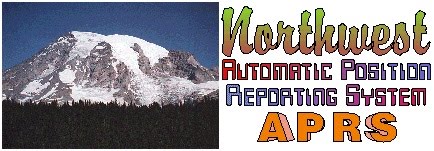- APRS-107 <== Muted APRS witch CTCSS 107 (with calling)
- APRS-VA <== Normal APRS with CTCSS 100 for voice alert
- APRSmute <== Muted APRS with DCS xxx
- APRS-raw <== APRS with no squelch for channel assessment
With the above 4 channels, there should never be any need to touch the volume control on the APRS radio side A. It should always have the volume up to normal volume to receive calls. The operator can select any degree of noise free operation with those 4 channels.
- APRS-107 Normal setting is APRS 107 which is basically APRS with voice alert, but with the local PL tone for our club. This keeps the radio QUIET, but if someone really did want to get the attention of the crew at the EOC (no matter where they were listening, they could key up on APRS with PL 107 and call them.
- APRS-VA For knowledgible operators, they can set normal Voice Alert if they want a proximity detector to know when other Voice Alert stations are in range. I would call this channel APRS-VA except that since we are adjacent to the State of Virginia, too many people will think it has something to do with that state instead of Voice Alert. SO in our case, I will label this channel as APRS-100.
- APRSmute Using the APRS channel with a random DCS basically means the speaker squelch will NEVER Open. SO in effect, this is APRS MUTED operation without having to touch the volume control.
- APRS-raw Choose this channel to quickly listen to the APRS channel for any kind of troubleshooting without having to go to TONE menues.
- Have a default for the radio to power up that is quiet
- Make sure no one ever has to touch the SQUELCH or VOLUME settings.
- But the APRS operator in the EOC can be reached if needed
- PM1 - APRS using the front panel. Band B on local UHF channel
- PM2 - APRS packet mode to PC client software. Band B on UHF
- PM3 - Voice Operation. Band A and Band B set for desired channels
- PM4 - Voice and BAND SCAN
- PM5 - Still thinking... About this one..?
Bob, WB4APR
